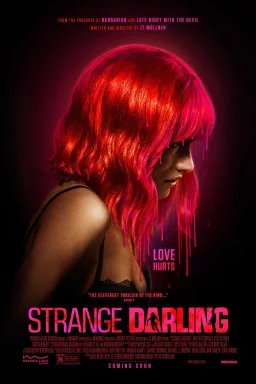Wait. Pixar finally has a quality animated film hitting theaters? Granted, it’s a sequel. But after seeing “Turning Red” pushed to Disney+ while a lukewarm film like “Lightyear” took its theatrical place, it’s taken far too many years for the studio to have a distinguished domestically released animated adventure. Even as a reintroduction to a familiar world, Kelsey Mann’s feature directorial debut “Inside Out 2,” a zippy yet gooey animated quest about belonging and individuality during teenage girlhood feels like a final, albeit predictable, return to normalcy.
The peppy sequel begins with the upbeat Joy (Amy Poehler) believing she has perfected an unimpeachable system. With the help of the usual crew—Sadness (Phyllis Smith), Anger (Lewis Black), Fear (Tony Hale), and Disgust (Liza Lapira)—she deposits the glass balls holding Riley’s worst memories to a distant realm called the ‘back of the mind’ and deposits the best moments to an underground lake whose glowing tendrils reach from the glimmering waters toward the sky, forming the girl’s core beliefs. “I am a good person,” Riley often repeats to herself.
You can’t really argue with Joy’s methods. Riley, now 13 years old, is giving, smart, and, by Joy’s own account, exceptional. The girl who once feared loneliness in her new Bay Area surroundings has a tight-knit friend group too: Grace (Grace Lu) and Bree (Sumayyah Nuriddin-Green). The trio are so close that they’ve formed a formidable team on their hockey squad. They’ve even caught the eye of Coach Roberts (Yvette Nicole Brown), a high school hockey coach who has invited them to a three-day camp where players like Val Ortiz (Lilimar)—Riley’s hero—attend. For Joy and her cohorts, you can’t ask for much more.
Meg LeFauve and Dave Holstein’s broad screenplay throws the biggest, most obvious obstacle possible at the teenager Riley: Puberty. A late-night alarm, in fact, announces its beginning, leading to some additional emotions appearing: the light-emo silence of Embarrassment (Paul Walter Hauser), the French beatnik Ennui (Adèle Exarchopoulos), the needy Envy (Ayo Edebiri), and an ambitious Anxiety (Maya Hawke). When Riley learns her best friends will be attending a different high school next year, Anxiety takes it upon herself to wholly recraft Riley in the hopes that new version of her will impress Val. She throws away Riley’s present sense of self to the back of her mind and exiles Joy and the other old emotions. It’s up to Joy and company to restore Riley’s former sense, journeying to the back of the mind, before Anxiety totally upends Riley’s ability to function.
Mann doesn’t necessarily break the formula the first “Inside Out” established. This is a fairly straightforward yet affecting story about Joy and Anxiety, both realizing that personhood can’t be reverse-engineered. Riley is so focused on gaining Val’s approval, thereby negating her former best friends, that she merely reflects Val rather than herself. She is also so driven by her competitive desires that she only feels satisfaction whenever she either gains approval from Val or proves her competitive dominance. Seeing Anxiety remold Riley into a blank character as Joy and the other emotions trace through the recesses of Riley’s mind makes for a mostly satisfying structure, allowing the film to assuredly bounce through visually dazzling blitzes of color and whimsy for an intoxicating style that at once feels gentle, fun, and safely crowd-pleasing as it deals with the pressure of being a teenage girl trying to conform to the lofty standards set by other teenage girls.
That doesn’t mean new jokes aren’t added along the way: a nightmare fueling “Blue’s Clues”-inspired character, a scene in Imagination Land recalling “Nineteen Eighty-Four,” and Mount Crushmore are sharp zingers. The new emotions, however, aren’t as memorable as the primary characters from the prior film. For such an urgent emotion, Envy pretty much fades into the background. Embarrassment has its moments, particularly when put in conversation with Sadness. Ennui’s act wears a tad thin after its initial fast start—the moodiness of being French is understandably a great well to keep hitting.
None of the new characters carry the same heartbreaking resonance as Bing Bong, who, admittedly, is among the greatest animated characters of the past decade. It’s surprising, then, that Anxiety and Joy barely have any scenes together. Maybe trying to recreate the two-handed dynamic that fueled the first film felt too obvious of a narrative choice. But without much else to replace it, the film does lean heavily on the barrage of jokes it throws at the viewer to carry it through its predictable maneuvering.
This is also another film that uses people of color—in this case, Riley’s Asian and Black best friend—to prop up a white girl’s personal growth. In this scenario, the white girl is unquestionably mean to her friends. But it’s okay because she’s going through it and needs their hurt to ultimately learn a valuable lesson that’ll result in them forgiving her. It’s simply more of the same trite privileging.
Even with these bumps, “Inside Out 2” zips confidently along, fashioning a hypnotic and transportive imaginativeness that is incredible to take in. Powered by an aching core of emotion, the film still manages to be a wondrous distillation of the overwhelming angst, incredible solitude, and difficult changes many teenagers are going through. The film grants an immediate roadmap to navigate this period while allowing adults to laugh from the comfort of having already lived through that debilitating phase of life.
In a late scene, Riley, unburdened by the drive to succeed, experiences pure joy. In her bliss, she nearly levitates, moving and breathing across the ice with the ease of light shining through a windowpane. Through her delight, you can’t help but feel how the message of learning to inhabit an activity for the love of it rather than for social cache or short-lived gratification is still necessary for all of us to hear. Even if its ring sounds a tad too familiar.




















